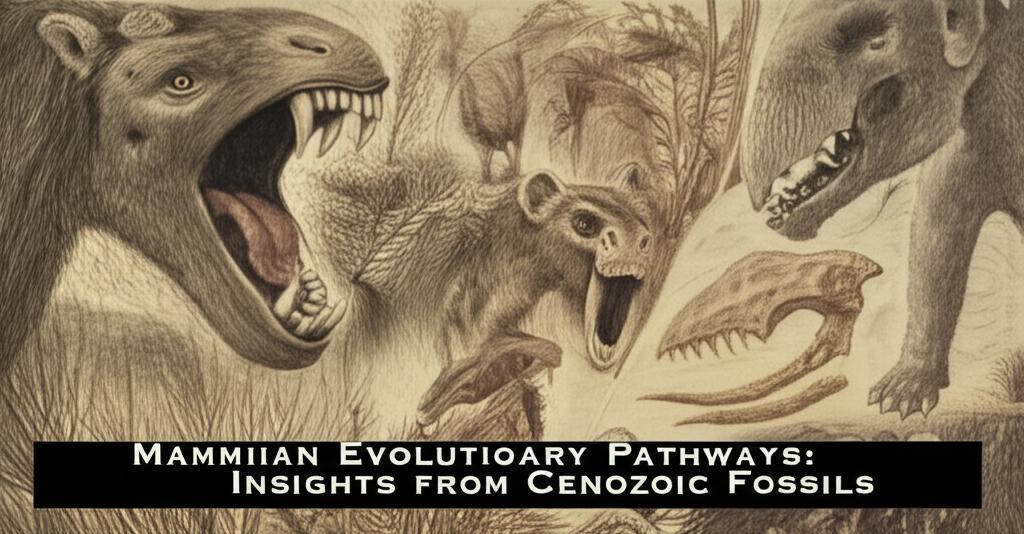The Cenozoic Era, often dubbed the "Age of Mammals," offers an unparalleled window into the evolutionary journey of mammals. Fossil discoveries from this period, spanning the last 66 million years, provide critical evidence of how mammals diversified from small, shrew-like ancestors into the vast array of forms we see today. These ancient remains are not just bones; they are storytellers, revealing intricate details of adaptation, extinction, and the very pathways of mammalian evolution.
Following the mass extinction event that wiped out the non-avian dinosaurs, mammals seized the ecological opportunities left vacant. Early Cenozoic fossils, from the Paleocene and Eocene epochs, showcase this initial burst of diversification. We see the emergence of many modern mammalian orders, including the earliest primates, rodents, and carnivores. For instance, fossils of early horses like Hyracotherium (once known as Eohippus) from North America and Europe illustrate a small, forest-dwelling browser, a stark contrast to the large, grazing plains-dweller of today. The fossil record meticulously documents the gradual changes in their teeth, an increase in body size, and the reduction of toes, all adaptations to a changing environment and diet.
The Oligocene and Miocene epochs were periods of significant global cooling and the expansion of grasslands. Cenozoic fossils from these times vividly illustrate how mammals adapted. Herbivores developed high-crowned teeth (hypsodonty) to cope with abrasive grasses, and their limbs became more specialized for running in open terrains to escape predators. Iconic megafauna, such as various proboscideans (relatives of elephants), giant rhinos like Paraceratherium, and diverse assemblages of deer and antelope, roamed these expanding savannas. Fossil sites in regions like the Great Plains of North America and the Siwaliks of Pakistan have yielded rich collections that illuminate these co-evolutionary dynamics between mammals and their changing landscapes.
Furthermore, Cenozoic fossils offer insights into intercontinental migrations and the impact of geographic isolation. The Great American Biotic Interchange, which occurred when the Isthmus of Panama formed in the Pliocene, is a prime example. The fossil record in both North and South America shows a dramatic mingling of fauna, with mammals like ground sloths and armadillos moving north, and species like saber-toothed cats and gomphotheres (extinct elephant relatives) venturing south. These fossils allow us to trace the origins, dispersal routes, and eventual fates—success or extinction—of these migrant populations.
Recent technological advancements have significantly enhanced our ability to extract information from Cenozoic fossils. CT scanning allows for non-destructive visualization of internal structures, such as brain cavities or inner ear morphology, providing clues about sensory capabilities and behavior. Isotopic analysis of tooth enamel can reveal dietary preferences and even the types of environments an animal inhabited. These modern techniques, applied to ancient bones and teeth, continually refine our understanding of mammalian lifestyles and evolutionary relationships.
The study of Cenozoic mammalian fossils is an ongoing endeavor. Each new discovery has the potential to reshape our understanding of how mammals responded to past environmental changes, how new groups originated, and why others vanished. These fossils act as crucial benchmarks, providing a deep-time perspective essential for understanding the present biodiversity and anticipating how mammals might adapt to future global changes. The intricate tapestry of mammalian evolution, woven through millions of years, continues to be unveiled one fossil at a time, offering endless insights into the resilience and adaptability of life on Earth.

